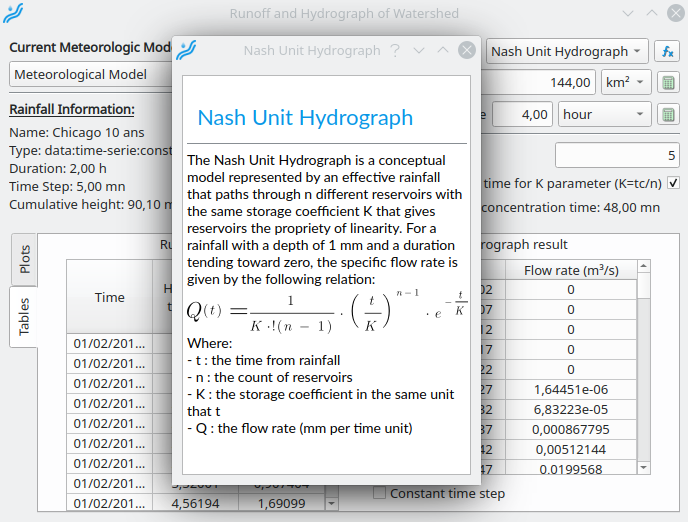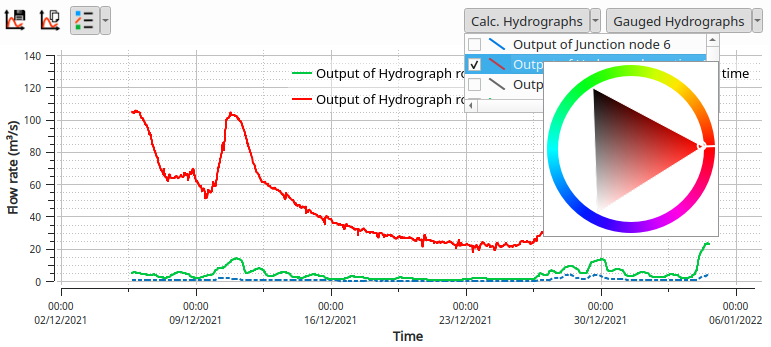-
Notifications
You must be signed in to change notification settings - Fork 18
Working environment
Lekan is a stand-alone application that used QGIS as a map engine in the back-end. It allows the user to take advantage of QGIS's asset for displaying a map. The supported layers type are almost the type supported by QGIS. The main formats of vector layers, raster layers and mesh layers are supported for displaying.
To load GIS layers in Lekan, two possibilities :
- Load a QGIS project
: layers linked to the project will be displayed with the same styling as defined in QGIS
- Load layers one by one. Layers can be styling using the layer properties windows.
When saving the Lekan project, GIS layers loaded and styled will persist.
In many parts of Lekan, the user can set parameters that will be used for calculation. Some of these parameters are derivable from other entities. In other words, they can depend on other entity. For example, the watershed area depends on delineating, the slope of flow path depends on longitudinal profile, or the concentration time that could depends on several parameters.
All these derivable parameters are connected with the entity on which they depend, so they are automatically updated. But the user can also override this parameter with other value. That allows liberty for the calculation.
When a parameter is derivable, there is a calculator button 
For example, with the image below, the parameter "Watershed name" is not derivable and can not be overridden. The average slop is derivable and is derived from another entity (here the longitudinal profile). And the watershed area is derivable and is overridden by the user.

Lekan uses several calculation methods for different tasks: synthetic rainfall, concentration-time, runoff method, hydrograph transfer function, hydrograph transformation,...
Some of those methods are described in this documentation, and some are directly expressed in Lekan environment. When this is the case, a button with this icon is present: 
Pressing this button leads to opening a window with a description of the method.

Data and result, especially time series, can be visualized in Lekan through plot.
Numeric results in Lekan can be exported either by values or plots:
- Values from tables by copy/paste (right click on the tables)
- Plot with the buttons
and
, the first for saving the plot as image on disk, the second to copy the plot as image in the clipboard
Depending on the context of the plot, it can be customized by:
- activation, placement, and column count of the legend with the button
. Clicking on the button activate/deactivate the legend. Clicking on the little arrow on the right open a little window to choose the placement and the column count of the legend:

- linear/logarithmic scale for X-axis (for IDF curves)
- for certain groups of curves, it is possible to activate/deactivate all the curves in a group or choose the curve to activate/deactivate by clicking on the associated button. Clicking on the little arrow on the right gives the curves individually to activate/deactivate. A right-click on the curve opens a color wheel that allows changing the curve's color. If the time series is displayed elsewhere, this will also change the color in this other place.

Time series are also displayed in tables for viewing and/or editing. Exporting values is executed by copy/paste, as importing values if editing is possible.
This is a side bar